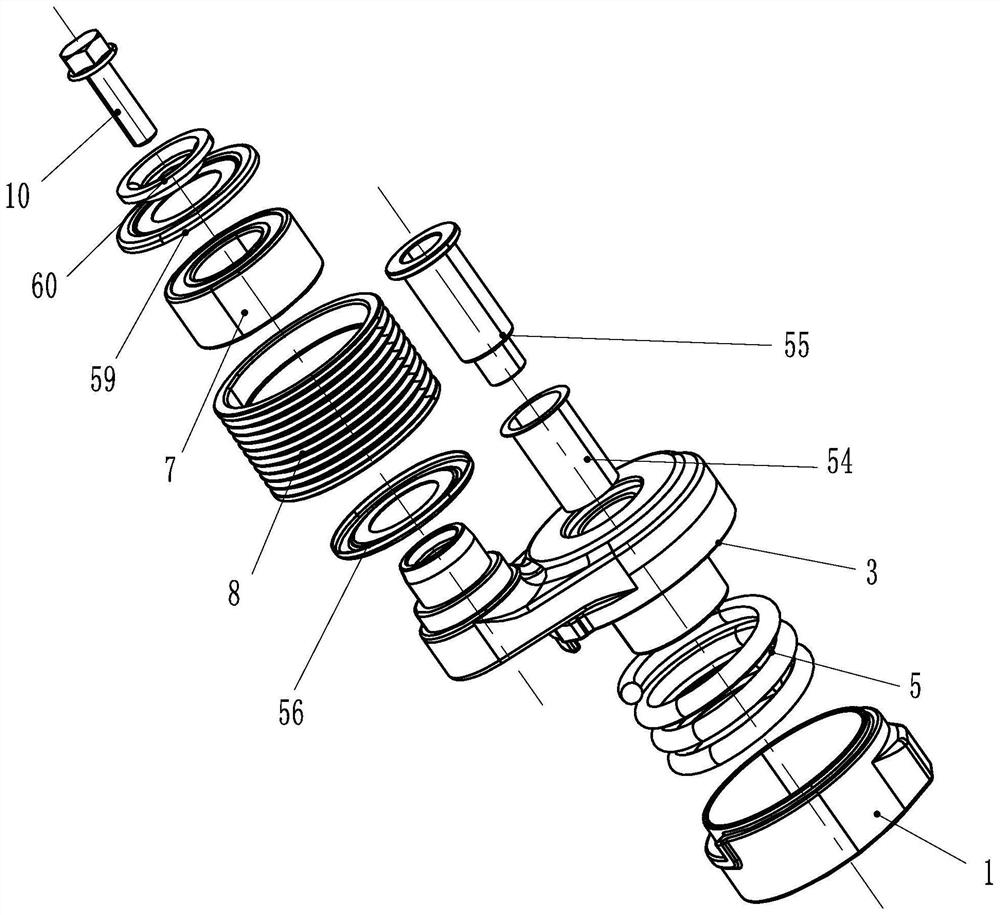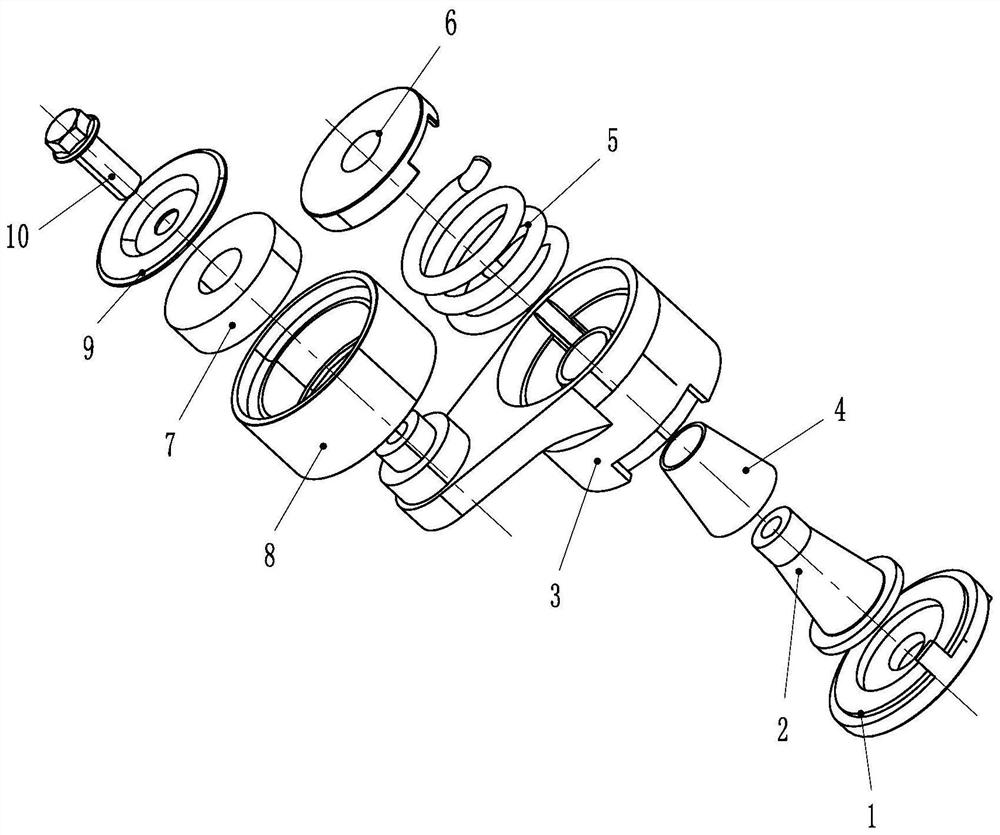Belt tensioning wheel mechanism of automobile engine
A technology for automotive engines and tensioning pulleys, which is applied to belts/chains/gears, mechanical equipment, transmissions, etc., and can solve the problems of insufficient belt tensioning pulley styles, inability to cope with abrupt stresses, and insufficient structure types, etc. , to achieve the effect of rich styles, high overall reliability and few parts
- Summary
- Abstract
- Description
- Claims
- Application Information
AI Technical Summary
Problems solved by technology
Method used
Image
Examples
Embodiment 1
[0117]In the present invention, the cone object may also be referred to as a conical object, or a conical alarm. Note: In this patent document, the relevant parts drawings, the graphics are deformed, and the taper in the text is accurate, please read the readers.
[0118]In order to specifically explain the taper or talking value of the present invention, the following is exemplified to thoroughly understand its meaning.
[0119]Figure 16 It is a schematic of a piece of a conical table.Figure 17 YesFigure 16 Stereoscopic illustration.
[0120]inFigure 16 ,Figure 17 The conical table object is 41 mm in a large end of its large end; its small end circular diameter D1 is 32 mm; its height H is 52 mm.
[0121]Figure 16 The conical table object, the taper is calculated as follows.
[0122]Cement = (large end diameter D1-small end diameter D1) ÷ height H
[0123]= (41-32) ÷ 52 = 9 ÷ 52 = 9 / 52
[0124]which is,Figure 16 The conical table object, the taper value is 9 / 52.
Embodiment 2
[0126]Figure 18 YesFigure 16 The conical table object has a schematic diagram of two cone extension lines;Figure 18 Two extension lines intersect the angle A1。
[0127]Embodiment A in Example No. A1If this A is not calculated1What is the specific value of the angle, and it can also be understood and implemented in the present invention; however, in order to provide more understanding and satisfying a wide range of interests, the embodiment is the angle A1How to calculate, as described below.
[0128]CalculateFigure 18 Crossing angle A1, We can use the triangular function method, first calculate the half angle A1The angle value of / 2, for this,Figure 18 Deductive transformationFigure 19 .
[0129]inFigure 19 Medium, half angle A1正 正 正 正 t: TANA1 / 2=4.5 ÷52≈0.086538461, ie the positive cut is approximately equal to 0.086538461, through the online check table, or through the online triangle function online calculator, you can know the half angle A1The angle value of / 2 is: 4 degrees 56 minutes...
Embodiment 3
[0132]Figure 20 It is a schematic diagram of a conical beaten object in this embodiment;Figure 21 YesFigure 20 Stereoscopic illustration.
[0133]inFigure 20 ,Figure 21 The conical table object is 41 mm in a large lateral diameter D2; its small end circular diameter D2 is 33 mm; its height H is 52 mm.
[0134]Figure 20 The conical table object, the taper is calculated as follows.
[0135]Celet = (large end diameter D2-small diameter D2) ÷ height h
[0136]= (41-33) ÷ 52 = 8 ÷ 52 = 8 / 52
[0137]which is,Figure 20 The conical table object, the taper value is 8 / 52.
[0138]Figure 22 YesFigure 20 The conical table object has a schematic diagram of two cone extension lines;Figure 22 Two extension lines intersect the angle A2。a2The angular value calculation method can be used to learn from the second embodiment.
PUM
 Login to View More
Login to View More Abstract
Description
Claims
Application Information
 Login to View More
Login to View More - Generate Ideas
- Intellectual Property
- Life Sciences
- Materials
- Tech Scout
- Unparalleled Data Quality
- Higher Quality Content
- 60% Fewer Hallucinations
Browse by: Latest US Patents, China's latest patents, Technical Efficacy Thesaurus, Application Domain, Technology Topic, Popular Technical Reports.
© 2025 PatSnap. All rights reserved.Legal|Privacy policy|Modern Slavery Act Transparency Statement|Sitemap|About US| Contact US: help@patsnap.com



